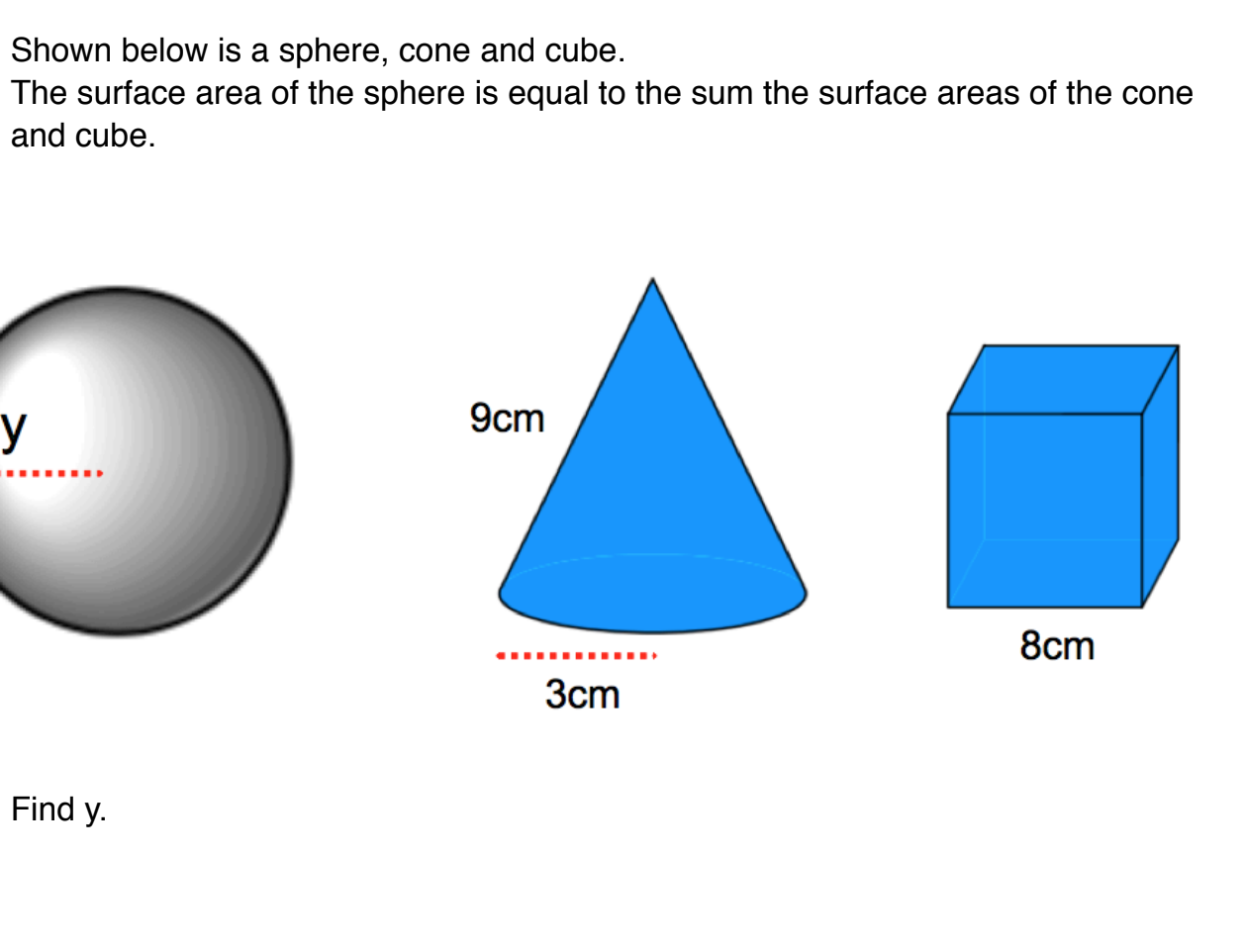Shown below is a sphere, cone and cube. The surface area of the sphere is equal to the sum the surface areas of the cone and cube. so what is Y's number?

1 Answer
Explanation:
First calculate the surface areas of the cone and cube.
The surface area of the cube:
We have 6 faces each having a surface area of:
Total surface area:
The surface area of a cone is given by:
We can do this by using Pythagoras's theorem.
If the slope is the hypotenuse, and the radius is one of the sides of a right triangle, then the missing side
Putting known values into the formula:
Surface area of sphere is the sum of the surface area of the cube and the cone:
Surface area of a sphere is given by:
We need to find
Divide by
Taking square root:
You can leave it in this form for an exact answer, or its approximate value of:

